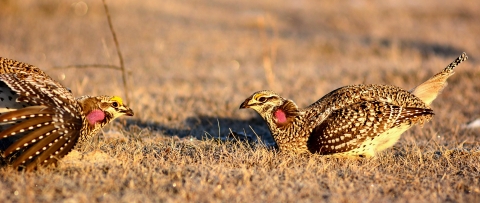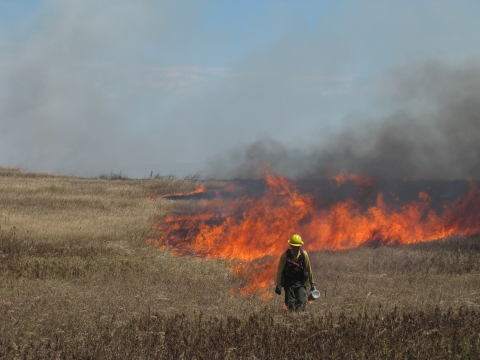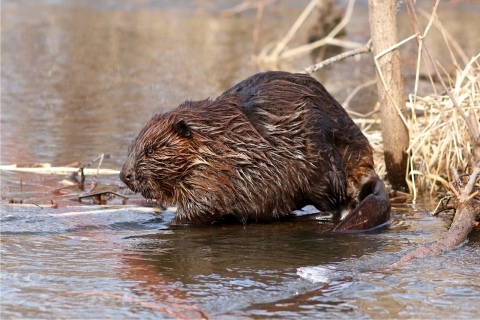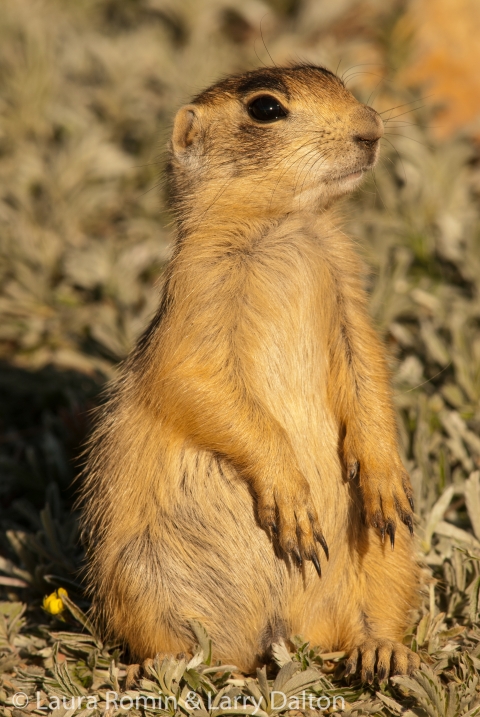The U.S. Fish and Wildlife Service is accepting public comments on multiple compatibility determinations (CD) for refuge uses at Lacreek National Wildlife Refuge (NWR). The compatibility determinations evaluate whether refuge uses are consistent with refuge purposes and the mission of the National Wildlife Refuge System. The compatibility determinations for Lacreek NWR can be found at the following document links:
For Lacreek NWR Documents:
- Outdoor Recreation CD Document Click Here
- Boating MultiType CD Document Click Here
- Research MultiType CD Document Click Here
- Environmental Education MultiType CD Document Click Here
Fire Wood Natural Resource Collection CD Document Click Here
Written comments can be submitted by email to FortNiobrara@fws.gov. Written comments will be accepted through December 27.
Visit Us
Lacreek National Wildlife Refuge Headquarters and Visitor Center is located directly north of the Nebraska/South Dakota border, approximately 13 miles southeast of Martin, South Dakota, and about 120 miles southeast of Rapid City. There are many routes to the Refuge, but no matter which path you take, you'll be treated to the sights and sounds that western South Dakota and north-central Nebraska have to offer. Drive safely and enjoy your visit!
We invite you to visit Lacreek National Wildlife Refuge to explore the wetlands and sandhills, and enjoy the wildlife that calls the Refuge home. Please call, e-mail, or write, and we will be happy to help you plan a trip and answer any questions you may have. Staff may be out in the field and away from the office, so please leave a message, and we will get back to you as soon as possible.
Headquarters Address:
29746 Bird Road
Martin, SD 57551
Phone: (605) 910-7086
Email: lacreek@fws.gov
Refuge Manager:
Todd Schmidt
(605) 910-7086
todd_schmidt@fws.gov
Location and Contact Information
About Us
Lacreek National Wildlife Refuge was established in 1935 as a refuge and breeding ground for migratory birds and other wildlife. The Refuge is located in southwestern South Dakota in Bennett County, and is the only refuge in South Dakota headquartered west of the Missouri River. Lacreek National Wildlife Refuge is in the Central Flyway, which is one of four major migratory bird flyways in North America.
The Refuge lies within the shallow Lake Creek valley on the northern edge of the Nebraska Sandhills and includes native sandhills, sub-irrigated meadows, freshwater marshes, and tall and mixed-grass prairie. The Refuge serves as an important staging area for migrating waterfowl, sandhill cranes, shorebirds, and grassland dependent migratory birds. One of the primary goals is to provide critical wintering habitat for the High Plains trumpeter swan population.
It is known from historic records that the Lacreek National Wildlife Refuge area was frequently visited by various Native American tribes during the 18th and 19th centuries; including the Lakota, Cheyenne, Arapahoe and Pawnee, to name a few. At this time, no prehistoric sites have been deemed eligible for nomination to the National Register of Historic Places, but future discoveries may bring new information to light.
Lacreek National Wildlife Refuge's history is forever tied to the Civilian Conservation Corps and Works Progress Administration era of the mid-1930s. With the country experiencing severe unemployment, President Franklin D. Roosevelt, after only two days in office, created the Civilian Conservation Corps as a means to employ young men ages 18-25 to work in forests, parks, and rangelands. In addition, young men working under the Works Progress Administration built large structures such as dams, bridges and levees to impound water and develop wetland habitats. These structures are still in use today!
Tours
Visitors are welcome to tour Lacreek National Wildlife Refuge by auto, boat and foot. Begin the 4.5 mile auto tour route at the Visitor Center and wind through the wetlands where you will see Trumpeter swans and numerous waterfowl. Walking trails include the Pelican Island Trail with nesting American white pelicans, and the Bird Trail which is home to warblers and many other songbirds.
Visitors are free to explore all areas of wetlands and grasslands of the Refuge on foot. Manually powered boats may be used for sightseeing on all open waters within the Refuge.
What We Do
Wildlife conservation is at the heart of the National Wildlife Refuge System. It drives everything on U.S. Fish and Wildlife Service lands and waters managed within the Refuge System, including the purposes for which a national wildlife refuge national wildlife refuge
A national wildlife refuge is typically a contiguous area of land and water managed by the U.S. Fish and Wildlife Service for the conservation and, where appropriate, restoration of fish, wildlife and plant resources and their habitats for the benefit of present and future generations of Americans.
Learn more about national wildlife refuge is established, the recreational activities offered and the resource management tools used. Using conservation best practices, the Refuge System manages Service lands and waters to help ensure the survival of native wildlife species.
Refuges deploy a host of scientifically sound management tools such as active water management and wilderness character monitoring to address biological challenges, all aimed at ensuring a balanced conservation approach to benefit both wildlife and people. Click here to learn more about conservation and management techniques.
Our Organization
The mission of the National Wildlife Refuge System is to administer a national network of lands and waters for the conservation, management and, restoration of the fish, wildlife and plant resources and their habitats within the United States for the benefit of present and future generations of Americans.
The Refuge System protects some of the country’s most iconic ecosystems and the fish and wildlife that rely on them: prairies of the heartland, teeming with native pollinators and bison; hardwood forests of the Southeast, a source of regional and cultural pride; desert Southwest landscapes, home to vibrant and rare plant communities that draw new life during the summer monsoon season. The Refuge System also conserves waterways that give life to all of them — critical ecosystems along rivers, streams, wetlands, coasts and marine areas.
The National Wildlife Refuge System lands and waters serve a purpose distinct from that of other U.S. public lands: Wildlife conservation drives everything on national wildlife refuges, from the purposes for which each refuge was established, to the recreational activities offered, to the resource management tools used.
Each refuge is established to target the conservation of native species dependent on its lands and waters. All activities on those acres are reviewed to ensure that they are compatible with the purpose of the refuge.
Our Species
Over 281 species of birds have been identified at Lacreek National Wildlife Refuge since 1959, including American White Pelicans, Trumpeter Swans, Golden Eagles and Burrowing Owls. An impressive number of mammals also call the Refuge home, including American beavers.
Projects and Research
Professors from colleges and universities bring their research classes to the Refuge to engage students in studying insects, water, birds, animals, and plants. Students also come to Lacreek National Wildlife Refuge to finish their thesis and gain hands-on experience relevant to their college degree, while grade school age children come to observe wildlife including white-tailed deer, ring-necked pheasant and waterfowl. Refuge staff and volunteers monitor numerous native prairie and aquatic birds, vegetation, and prairie dog populations.








